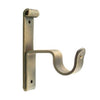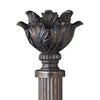Curtain Construction: Understand the Make-up of Window Dressings
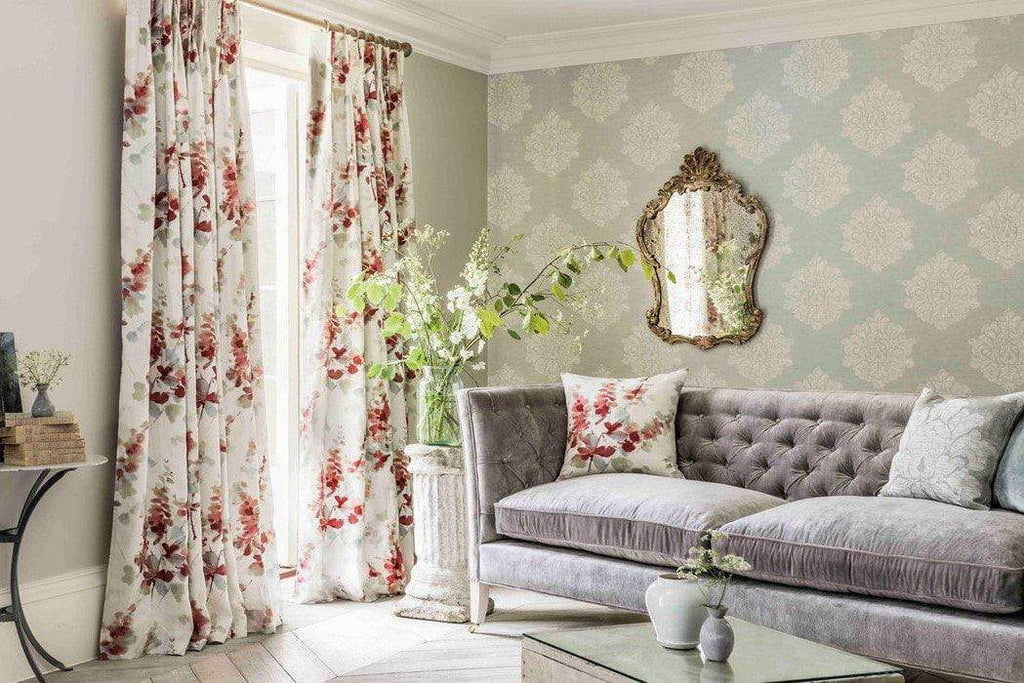
We all know that dressing a window in soft textiles or blinds enhances the overall look of an interior. But most of us have no idea what curtain construction entails, let alone what all the different elements of a curtain are called! We’ll break it down for you so that next time you update your window dressing, you’ll know what goes where, what it’s called, and what it looks like!
Let’s start with the bare bones of window dressing: the Curtain Hardware

source: Domino
Without a frame to support a lovely window dressing there would be no loveliness or window dressing, only a pile on the floor. This makes curtain hardware pretty important when it comes to beautifying a home.
- Curtain Rod
A curtain rod is a pole from which you directly hang curtains, drapes or blinds. There are different kinds of curtain rods that cater for different style drapery.
- Bracket
An essential part of drapery hardware, brackets (also known as curtain rod hooks) have to be strong to carry the weight of your curtain choice. Brackets are installed directly onto a wall above a window or within the head of a box window. You’ll need at least two brackets when installing curtain hardware.
- Finial
A finial is a curtain rod’s end stopper that enhances the decorative feature of the curtain hardware. Finials can be as decorative or plain as the interior needs.
- Holdback & Tieback
A tieback refers to a piece of material that is attached to a curtain to keep it open, whereas a holdback is installed directly onto the wall and is often made of iron, wood or plastic. Curtains are pulled to the side and slipped behind the holdback to stay in place.
Now for the face of Window Dressing

source: J & J Design Group
Top Curtain Covers
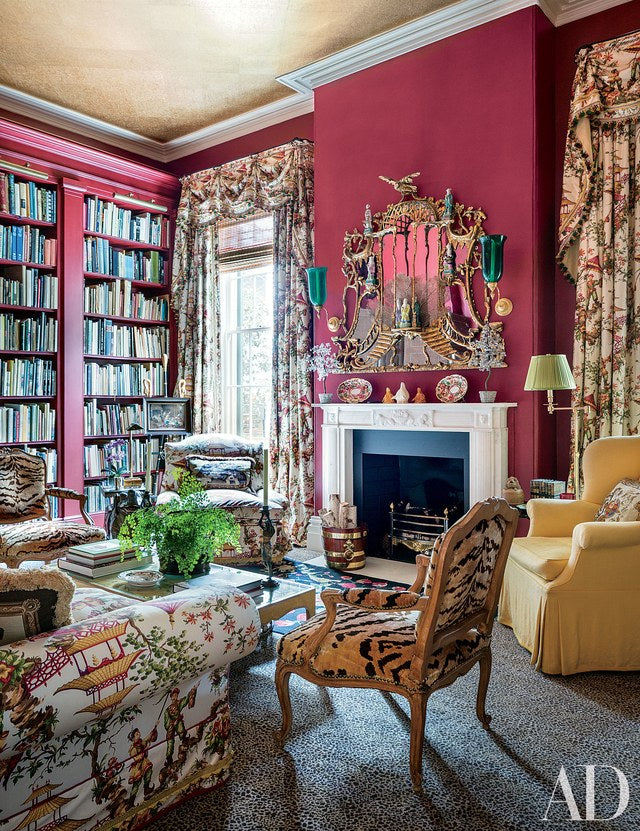
source: Architectural Digest
A curtain cover is a box-like structure that covers the curtain heading. These covers are often made from wood and can be upholstered to match the curtains.
Cornice
Cornices are often confused with moldings and can have multiple applications in a home. The word cornice means a decorative cover, most often made of wood, which conceals certain construction elements. A cornice above or built into a window frame covers the curtain hardware and take on a box-like structure.
Pelmet
Similar to a cornice, a pelmet is also constructed out of wood and has a box-like structure. The main difference being a pelmet is upholstered to match the interior or drapes. Pelmets and cornices can take on a variety of shapes; from flat-bottomed to arched. A pelmet pole functions as a decorative concealer for a curtain pole and can have a double rod system.
Valance
Valances are also a type of top-curtain cover but are made predominantly out of fabric and can be minimalist or elaborately styled. These mini top-curtains can have fringes, tassels, pompoms and even be tiered or pleated! The word valance is often used to refer to pelmets and cornices too because valances are more widely known.
Curtain Headings

source: Adventures in Cooking
Homemakers are spoilt for choice when it comes to curtain headings. The vast variety of heading design means there is a perfect match for every home!
Pleats
Pleats are one of the most popular curtain heading choices in interiors. The pleat width is controlled by pulling string woven through heading tape stitched to the top of the fabric. The tighter the pleats are drawn together, the fuller the curtain will appear. Curtain prongs or hooks are attached to the back of the curtain and hung on a curtain track or curtain rod.
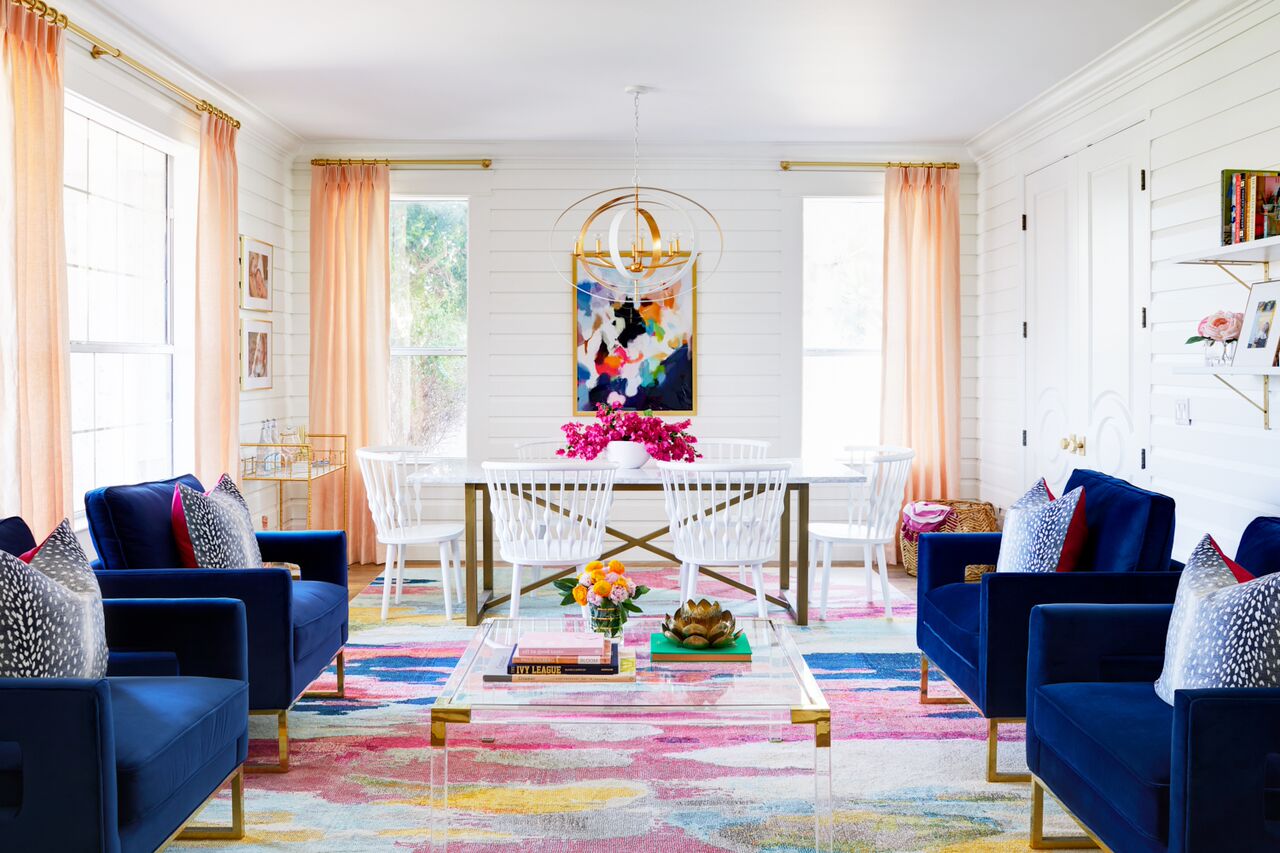
source: J & J Design Group
- Pencil Pleat
The most traditional curtain heading style, the pencil pleat, is perfect for light fabrics or heavy fabrics used with a pelmet or valance. A variation of the pencil pleat is the deep pleat that is ideal for long curtains.
- Pinch Pleat
A pinch pleat is a neater design that gives a formal look to curtain fabric. A single pinch pleat curtain forms neat vertical lines in the material where the creases are. Double pinch pleat curtains have a structured heading with an elegant pleat draping down the fabric. A triple pleat is ideal for heavy curtains with interlining as the structure of three pleats create a full curtain style that looks formal.
- Goblet Pleat
Similar in style to a double pinch pleat, the top of this pleat is goblet-shaped and is classic without being extravagant.
- Box Pleat
Unlike pinch pleats, box pleats create a flat front as the fabric is gathered at the back of the curtain. A box pleat gives a simple and minimalistic look to an interior but requires a wider window to appreciate the clean lines.
Eyelet (Grommet)
The eyelet or grommet curtain is a fuss-free curtain option that doesn’t require curtain hooks or prongs. Eyelets, or structured holes, are incorporated into the header of the curtain so that it can slide directly onto a curtain rod.
Tie Top
Tie top curtains have a natural and romantic look because of its tied ribbon-like top. Sheers and linens are great fabrics for a tie top curtain.
Rod Pocket

source: Pop Sugar
A rod pocket is precisely that, as a beautiful curtain pole simply slides into one continuous pocket-like top seam.
Tab Top
A tab top is similar to a tie top but a little more formal. The curtain tabs are made from separate strips of fabric sewn to the top of the curtain to create loops for a curtain rod to slide through.
Curtain Hem Lengths

source: The Spruce
Curtain lengths depend on the window size and height, but keeping to hem length guidelines can make a window dressing amazing! Small windows don’t necessarily need short or small curtains, but big windows always require long curtains.
Short hems
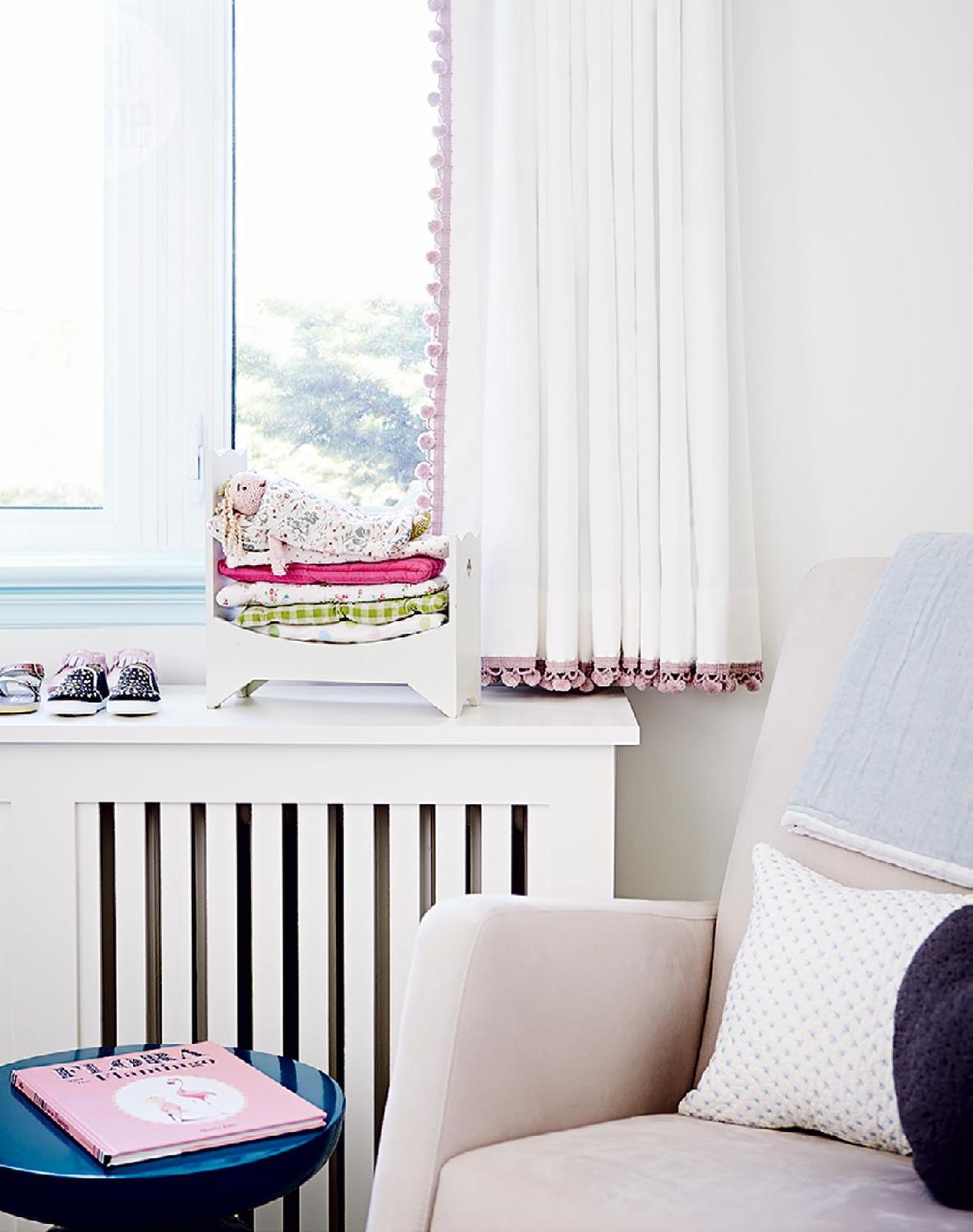
source: Style at Home
Café curtains fit perfectly within a window and stop at the window sill. A café length curtain works well in a kitchen and cottage style homes. Since the small curtain will fit within the window box, measure the height and width on all sides to ensure a perfect fit.
Alternatively, install a short curtain at least 4 inches above the top of a window while allowing an overflow of 4 inches below the window.
Long hems
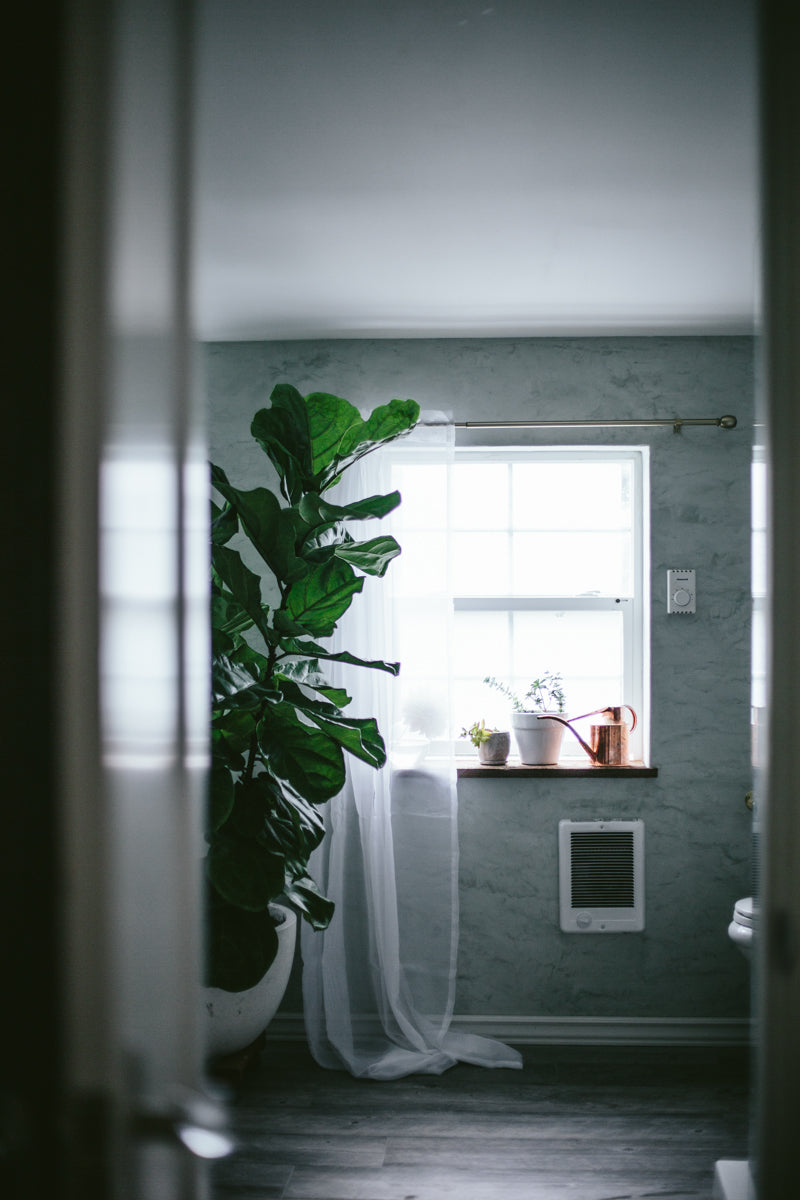
source: Adventures in Cooking
Romantic, formal or opulent long-hemmed curtains can suit any interior and add height to the room too.
Floor length curtains hover just above the floor, and the hem should be no higher than half an inch from the floor. They open and close easily, which makes them a good choice in bedrooms.
On-the-floor type curtains are opulent and add a Baroque atmosphere to a room. This custom curtain style is ideal for areas where curtains are not closed often and function more like a dressing curtain. Curtains can either just sit on top of the floor which is achieved with an additional two inches in length or can lie heavily on the floor with four inches or more.
Lining & Layering
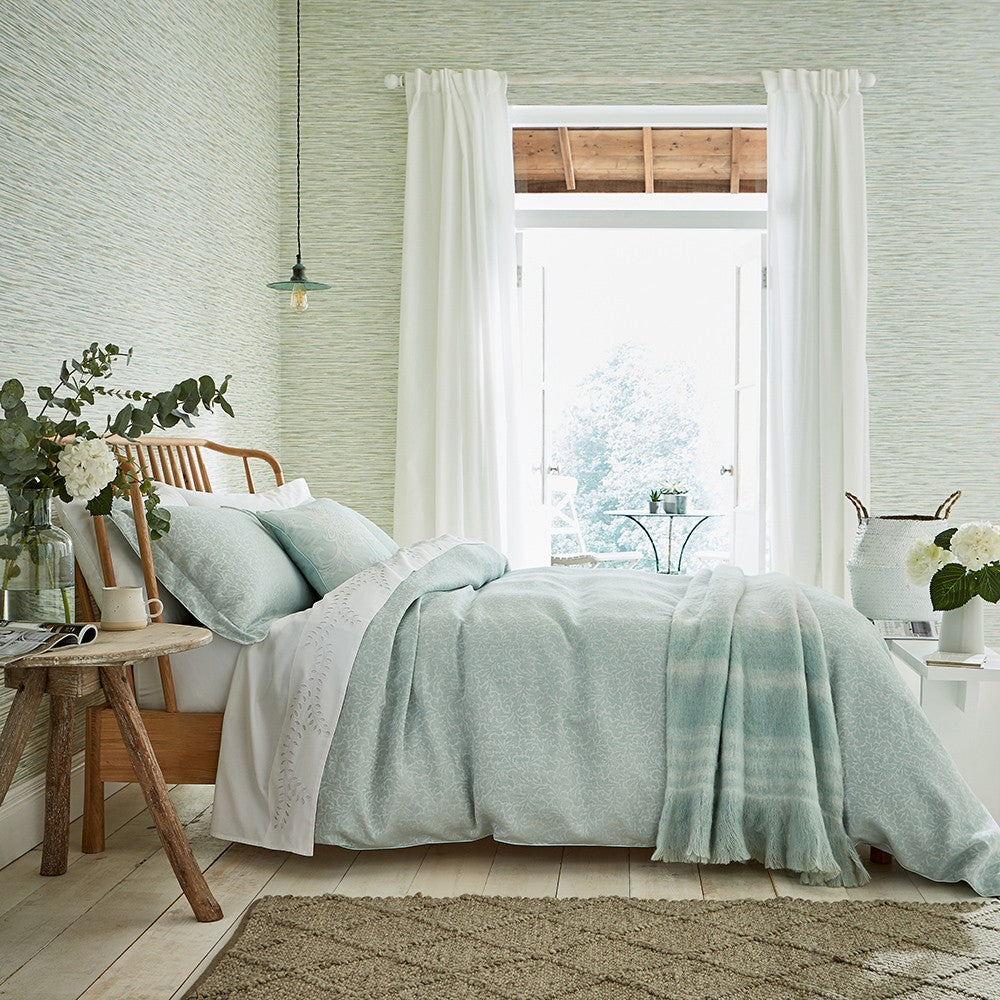
source: Glasswells
Heavy curtain lining and layering can add depth to an interior and work as an insulator, whereas limited lining or layering is perfect for spring and summer.
Dress Curtains
An opulent room is an ideal place for dress curtains. These double layered curtains add sophistication to an interior while keeping out the cold. Tiebacks and holdbacks are often used in conjunction with dress curtains as these heavy curtains are slightly pulled to the side to open and do not slide on the double curtain rod.
Lining
Curtain lining adds structure to curtains and gives it a beautiful draping quality while protecting the lovely fabric from sun and moisture damage.
-
Blackout
Blackout lining is the best choice for a light-sensitive sleeper. Curtains with blackout lining have a protective layer that protects the fabric and furniture from UV light.
- Insulation
Apart from adding fullness and giving drapes a luxurious look, insulating lining can reduce noise and act as a thermal regulator. This means heat and sound can be kept in or out of the house.
- Fire Resistant
Flame retardant lining is frequently used in commercial buildings but is available for residential use, and several curtain linings are classified as fire resistant.
Now that you know what goes where all you have to do is pick your favorite curtain style and start wondering “how many curtain panels do I need?” to create a dream window dressing.













